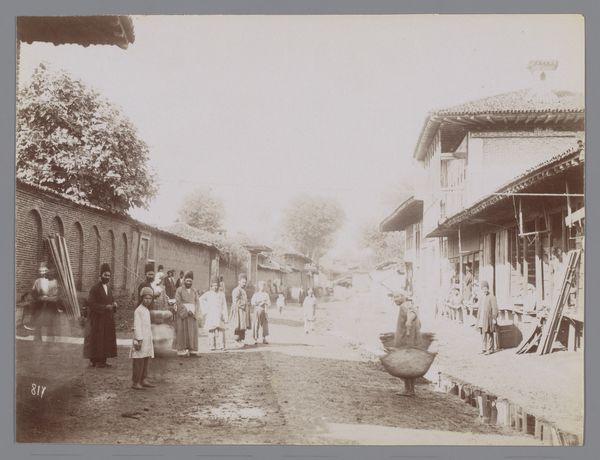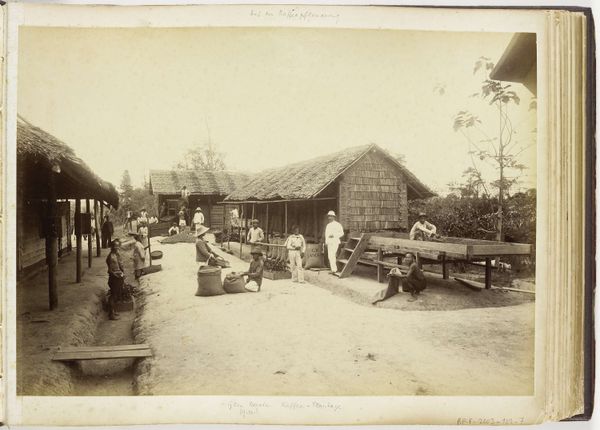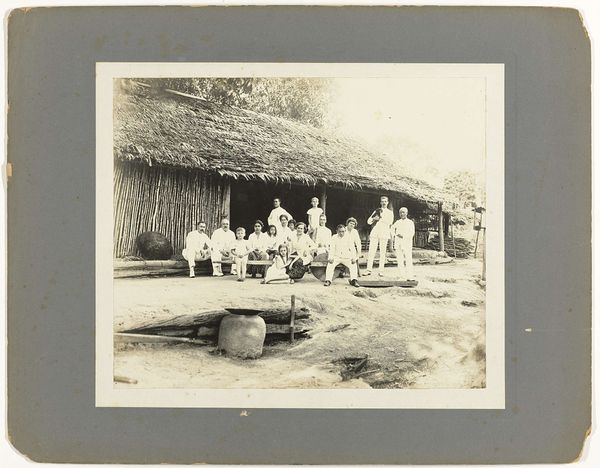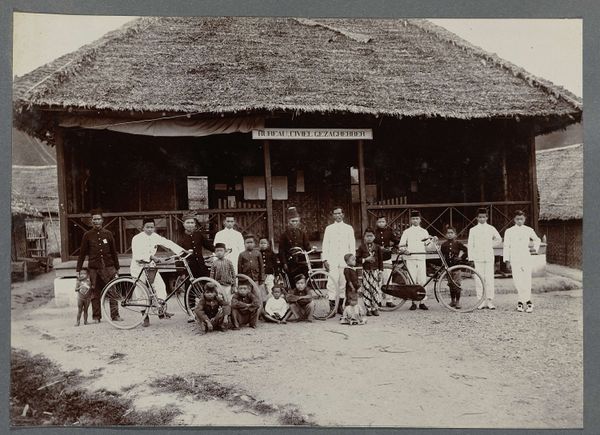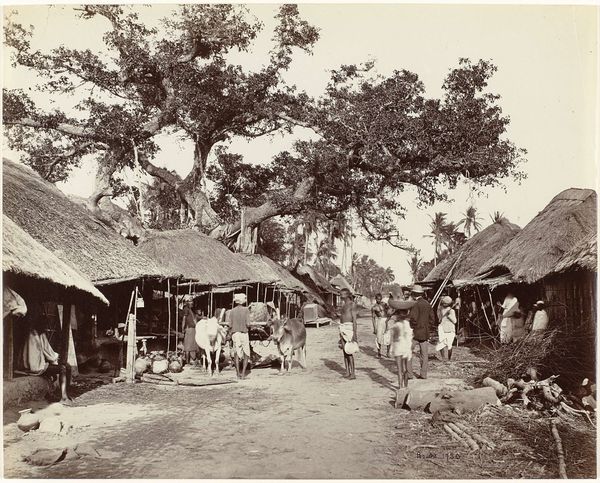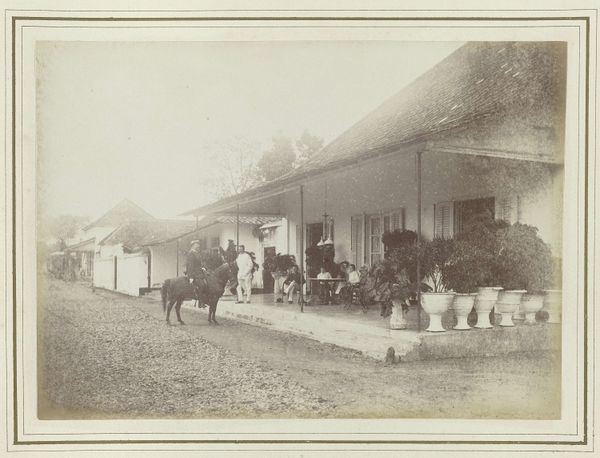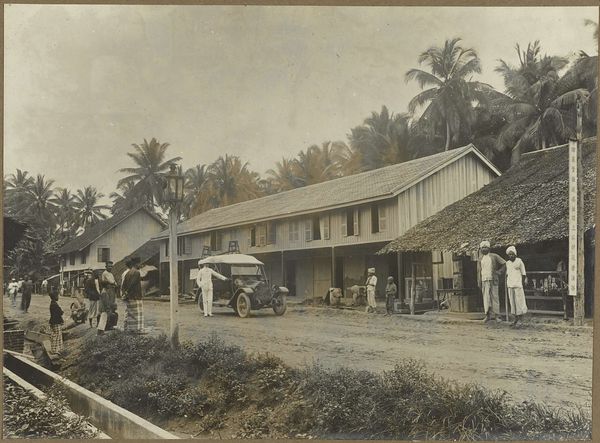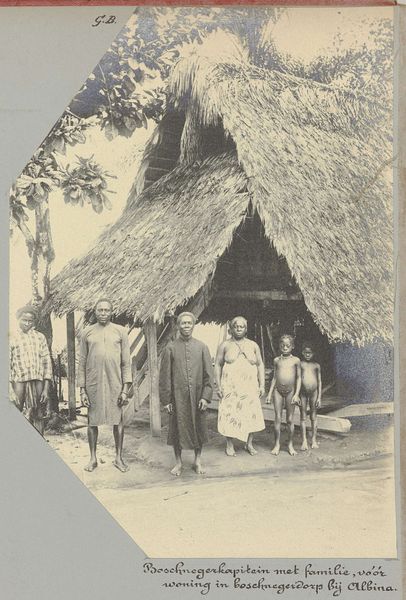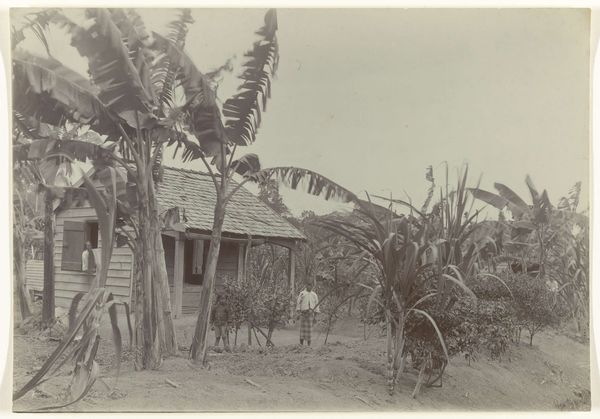
photography, gelatin-silver-print
#
portrait
#
16_19th-century
#
landscape
#
photography
#
gelatin-silver-print
#
genre-painting
#
realism
Dimensions: height 268 mm, width 371 mm, height 288 mm, width 385 mm
Copyright: Rijks Museum: Open Domain
Editor: This gelatin-silver print, "Contractarbeiders en opzichters voor arbeiderswoningen," dating from between 1890 and 1900 and attributed to Heinrich Ernst & Co, is such a fascinating image. It strikes me as a very staged scene, almost like a tableau vivant. What jumps out at you? Curator: Ah, "staged" is a good word, almost a loaded word these days, isn't it? For me, the very static nature is evocative. It almost shouts of the societal structure of the era—those with power posed stiffly in a carriage or standing ramrod straight, while the workers are seated or positioned almost as props. There is a real discomfort that you can almost feel. Don't you find that contrast revealing? Editor: Absolutely! There’s such a clear visual hierarchy. I hadn't considered the feeling of discomfort that the positioning gives rise to, it seems almost...purposeful. What is that thatched structure behind them? Does that offer insight to the work? Curator: Good eyes! To me, the building serves a few purposes. Compositionally, it frames the scene. But symbolically, the humble materials of the structure, probably mimicking what worker’s family houses are built from, are juxtaposed against the crisp European clothes and authoritative stance of the overseers. The very earth seems to support those workers, they are quite literally grounded. It makes me wonder: what narrative are the artists trying to convey? Is it critique or just documentation? It makes you think! Editor: I never would have considered how much of the power dynamics are built directly into the backdrop itself! Thanks, this really changes how I see it. Curator: My pleasure! Art is, after all, just seeing what’s always been there, but noticing it for the first time, eh?
Comments
No comments
Be the first to comment and join the conversation on the ultimate creative platform.


